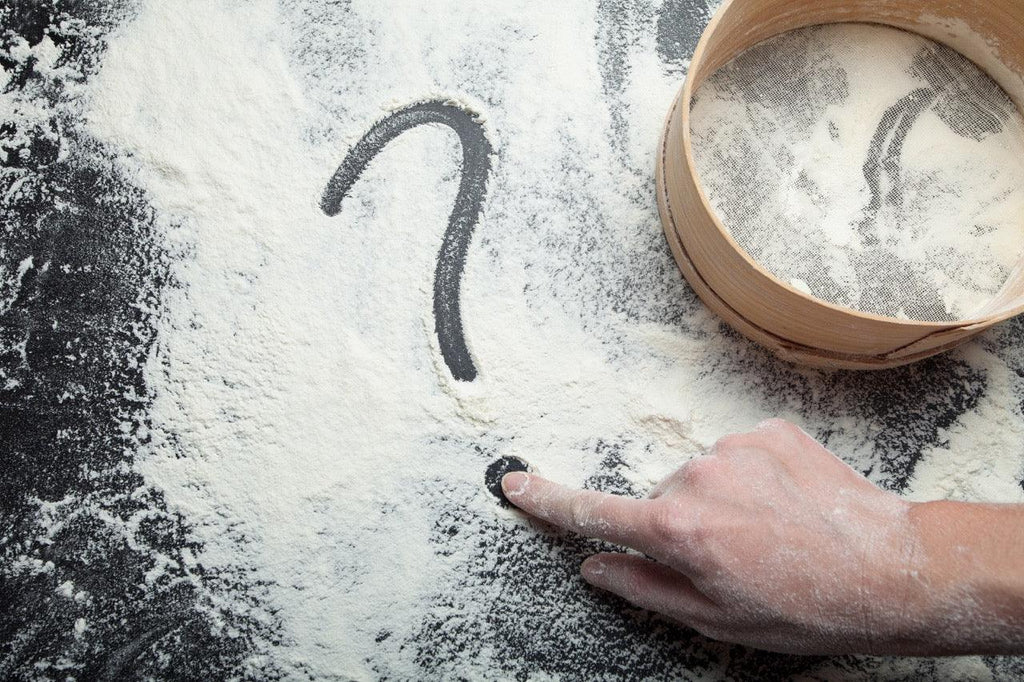Name an item you’ll find in every kitchen pantry - ready, set, GO!!
Okay, okay, did you say flour?
A pantry staple, flour is an integral ingredient in most cuisines. But what is flour? Sure, most often it’s ground up wheat, but what does that really mean? Besides, isn’t wheat supposed to be bad for you?
Fun fact: Did you know that wheat provides more nutrients than any other human food and is the leading source of vegetable protein worldwide?
Flour is formed by grinding a cereal (no, not that kind of cereal, rather, a grass crop with edible grains) into a powder through a milling process. Common grains you may be familiar with include barley, corn, millet, oats, rice, rye, sorghum, and wheat. Outside of the grass family, potatoes, legumes (soy), and chestnuts can also be ground into flour.
Fun fact: Did you know that there are over 9,000 species within the grass family across the world?
Let’s talk about wheat specifically. The fruit of the plant is a hard seed referred to as a caryopsis.
Fun fact: Did you know grains are one seeded fruits?
The caryopsis is responsible for the reproduction of the plant. It also contains nutrients (carbohydrates and protein), and is composed of three main components: the germ, the bran, and the endosperm.

The Germ
The germ is the embryo located in the innermost part of the seed. It contains the genetic information for reproduction and is full of proteins, oils, vitamins, minerals, and enzymes. High in fats, it is often removed to prevent flour from going rancid. It makes up 2-3% of the grain.
The Bran
The hard outer layers of the grain, the bran is a coat made of insoluble fiber, antioxidants, and vitamins. This protective layer keeps the embryo safe from pests and disease and makes up 14-16% of the grain. The high fiber in bran aids in digestion and may prevent diet-related diseases.
The Endosperm
The endosperm makes up 81-84% of the grain and is rich in starch and protein which act as energy sources as the grain grows.
These components distinguish different types of flour. For example, “00” flour, the most refined type, contains just the endosperm while whole wheat flour is exactly that - the whole wheat kernel - the germ, the bran, and the endosperm.
So when and where did flour originate?
The most widely accepted theory cites the Fertile Crescent of the Near East, also known as the Cradle of Civilization (modern day: southern Iraq, Syria, Lebanon, Jordan, Palestine, Israel, Egypt, and parts of Turkey and Iran), as the place where wheat was first domesticated and cultivated (domesticated Einkorn wheat in Turkey dates back to 9,000 BC!). However, Modernist Bread found that the first flour and first attempts at wheat and barley agriculture existed in the Paleolithic period! According to Modernist Bread’s research, the earliest archeological evidence of flour dates back to 100,000 BCE and was discovered in a cave in Mozambique in 2009 when stone tools with sorghum residue were found. Modernist Bread also found evidence of early attempts at wheat and barley agriculture near the Sea of Galilee dating back to 21,000 BCE!
While we may not know the exact circumstances or date that led to the first creation of flour, it has been a staple ingredient throughout history. From being baked as a flatbread and pancakes on stones, to the creation of cooking devices and containers, to the formation of an industrialized milling processes, flour has evolved alongside us.
When you’ve looked at flour, you probably never thought about it’s composition, where it came from, how it was made, and how it has evolved. Wheat has been around for thousands of years and is an ingredient the whole world relies on for nutrition. Let’s end the stigma around wheat and around flour.
Fun fact: Did you know that wheat covers more of the earth’s surface than any other food crop?

